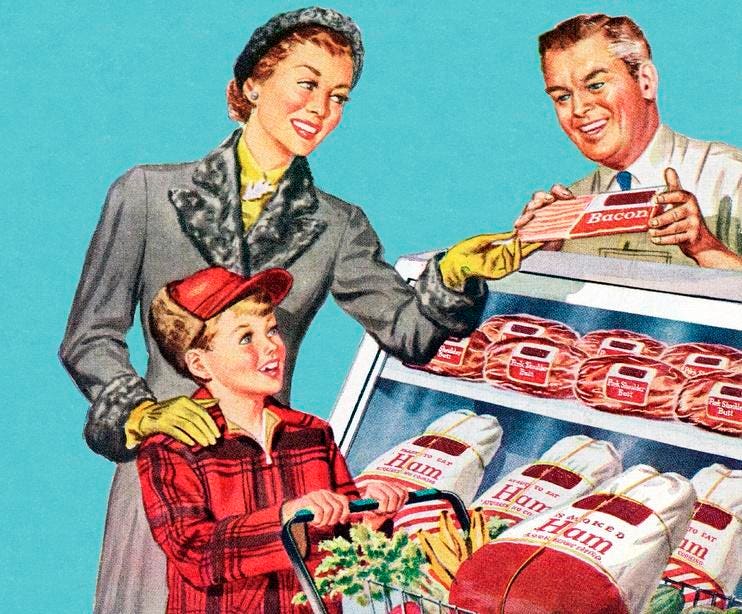What’s not to love about September? School resumes en masse, blistering temps begin to mellow, and as our tans fade and we head toward the final quarter of the year, many of us knuckle down in preparation for the coming weeks and holidays. On October 17, the U.S. Census Bureau released its retail results for September. These results reveal insight into what is on the minds of consumers courtesy of where and how we’re spending or allocating funds. They can also inform us about what we prioritize and potential issues or headwinds faced during the month.
Overall, September results reveal that consumers continued to spend mindfully, which could be for several primary reasons, including how to offset inflation, which has been a core concern for over a year and counting. Meanwhile, an entire swath of consumers also has to consider the resumption of student loan payments. And finally, some consumers are in what I like to call a “spending hangover,” and if they bought using credit, the headache could prove severe and lasting. Regarding credit, Jeffrey Roach, chief economist for LPL Financial, remarked, “Rising use of credit and early signs of delinquencies could dampen some of the enthusiasm,” in a reaction to retail results.
Sales increased to $704.9 billion in September from $699.9 billion in August. Although these results are arguably nothing to sneeze at given the overall economic environment, Neil Saunders, managing director of GlobalData had mixed remarks on the news. “While the numbers have softened since the start of this year, and are much weaker than last year, they’re still coming in around the long-term average for growth,” he wrote. “However, compared to pre-pandemic years the difference now is that much of the growth is still being driven by inflation, and when this is considered volumes are down by 0.5% this month. That’s slightly sharper contraction than last month.”
Saunders continued, “Core retail sales expanded by a modest 2.2% which is the weakest pace of growth since April’s 1.2%, and significantly below the long run average growth rate.”
Digging into the specifics, consumers spent big on their transportation. Motor vehicle and parts vendors reported sales of $135,226 billion in September, up from $133,842 billion in August. Gasoline stations also saw a spike, with consumers spending $56,677 billion, up from $56,183 billion in August. Both months eclipse July, when consumers spent $52,652 billion at gas stations and $133,333 at vehicle and parts vendors.
Categories that often capture disposable income showed mixed results in September. While consumers spent more on their cars, interiors, and exteriors were not the biggest priorities during the month. Furniture and home furnishing stores declined to $10,998 billion in September from $11,003 billion in August. Building materials and gardening suppliers also declined, reporting $41,606 billion in September compared to August which was slightly higher at $41,674 billion. Electronics and appliances also declined to $7,715 billion in September from $7,777 billion in August, while clothing and accessories fell to $26,017 billion from $26,226 billion in August. Regarding the electronics stores results, Saunders remarked, “electronics stores declined by 2.5%, and this comes despite the relatively successful launch of Apple’s
AAPL
new iPhone towards the end of the month.”
But it isn’t all bad, I promise.
Consumers spent their money on more than just their cars and fuel in September. Food and drinking establishments reported more robust results at $91,865 billion, up from $91,014 billion in August, and both months beat July, which came in at $90,623 billion. General merchandise also saw a slight uptick, with September results of $73,784 billion, up from $73,456 billion in August. Department stores, which fall into this bucket, barely etched up at $11,062 billion from $11,060 billion in August. Food and beverage also captured a significant amount of consumer cash. In September, consumers spent $82,530 billion, up from $82,219 billion in August. Within this bucket, grocery stores rose to $74,189 billion from $73,930 billion in August.
And finally, my favorite category: the “treat yo self” category. Health and personal care continued to enjoy consumer attention, rising to $36,726 billion in September from $36,437 in August. So, while we might not have splurged as much on items like new clothes or electronics, looking and feeling good were priorities.
Looking ahead to the next round of results, which comes out in about a week, I will be looking out for any possible Halloween-related bumps at places like grocery stores and potential spending spikes related to early holiday shoppers.
Read the full article here




